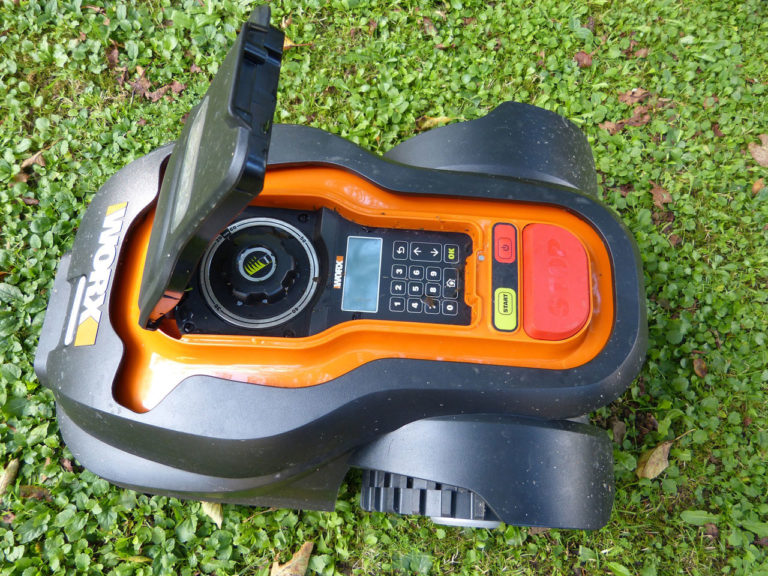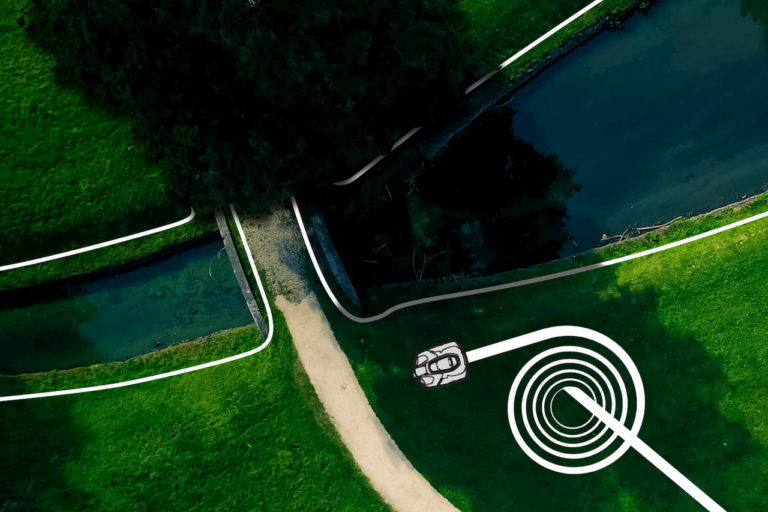There are many different boundary cables you can use for robotic mowers. In addition to the varying boundary wires of different manufacturers, there are alternatives to choose from for some specific cases as well, like for yards that have rodents.Therefore I have compiled a complete overview of all these different kinds of boundary wires, and will provide you here with some guidance on deciding which one you might need.
Which boundary wire should you use for your robotic mower? A robotic mower can generally use a boundary wire from any manufacturer. However, you should make sure that the cable is intended for a robotic mower with approximately the same area output as the mower, as the electrical resistance in the cable must not be too high for very large areas.
But there are also various types of boundary wire, such as cables with extra thick insulation to better protect them against adverse weather, or with special sheathing to protect them from rodents or damage from garden tools. There are also various cheaper alternatives. Here you can get a complete overview.
Contents
How can boundary wires differ?
Boundary cables for robotic mowers are composed of an outer protective layer, which can be made of various insulating materials, usually PVC, and an inner wire, made of a metal with good conductive properties, usually copper.
Most standard boundary wires consist of this simple structure. This means an insulating jacket made of PVC on the outside and a single-core copper cable on the inside.
Some cables, such as those from HUSQVARNA, do not use copper, but a special metal alloy to provide slightly better resistance.
Some alternatives to the traditional boundary wire can also be made of different materials, both for the conductor cable and the insulating layer.
There are also differences in the diameter of the cable and the number of wires. Some cables consist of several wires twisted together. A larger cable diameter provides less resistance. This is important for very large areas or very long boundary cables, so that the signal can reach the end of the cable.
Then there are special safety cables that are protected against damage of various kinds, e.g. from shovels or rodents. These cables have a tinned copper braid around the insulating sheath, which in turn is enclosed by another protective sheath.
Due to these differences, boundary cables for robotic mowers also differ in their diameter, due to the number and thickness of the layers, and in their flexibility, due to the thickness and the material used.
So here is a list of the different attributes that distinguish boundary wires:
- Material of the insulating layer (often PVC, the same for all manufacturers, not necessarily for alternative cables)
- Material of the electrical conductor (copper, aluminium, steel, various alloys), resulting in differences in electrical resistance
- Thickness of the electrical conductor, resulting in differences in electrical resistance.
- Single core or twisting
- Additional protective layers
- Flexibility, due to thickness and material
- Thickness of the entire cable
Can I use a cable from another manufacturer?
The cables of the different manufacturers don’t really differ much, in fact, most of them are completely identical. Basically you can use the boundary wire of any manufacturer for your robotic mower.
Still, you have to remember one thing: the electrical resistance of the cables can differ, even with cables from the same manufacturer. This is because, in the case of very large areas, the resistance in the cable must be lower so that the signal reaches from the beginning to the end of the cable and does not fall by the wayside due to excessive electrical resistance in the cable.
This means that if your robotic mower is intended for the same area as your boundary wire, it should actually work with any manufacturer’s wire.
For example, one can strongly assume that all cables for a specific area, no matter which manufacturer they’re from, are almost identical and fit with every device.
However, if you try to use a boundary wire of a smaller WORX model for a HUSQVARNA Automower with ¾ acre output, you could run into problems, because the wires are not made for the same sized area.
You can use the cable of any robotic mower manufacturer, but it should match the area output of your mowing robot. The diameter of the cable usually gives you an indication of this.
As a rule of thumb, you can remember: the larger the diameter of the cable, the larger the area it is intended for.
What can cause boundary wire breakage?
Boundary cables can sometimes break due to various influences. On the one hand, they must be resistant to weather conditions. The manufacturers’ cables actually promise to withstand them for many years.
However, even the slightest damage to the outer insulation layer can cause small cracks through which water penetrates over a long period of time. This then causes the cable to rust through.
Just by using an ordinary hammer for the fixing hooks when laying the cable, you can accidentally hit the cable, causing such cracks to occur. Therefore it is better to use a wooden or rubber hammer, or even a special soft-face hammer.
If the cable is not damaged, the original manufacturer cables can really last 10 years or more.
But even if the cable has already been laid, it can still become damaged. If the cable is laid above ground, it may be scratched or even cut when scarifying. Even if the cable is laid in an unfavorable position, especially on curved lawns, the mowing robot poses the risk of slicing the cable.
Even underground cables are not one hundred percent safe from damage. Miscalculated digging with a shovel can lead to the cable being cut, and moles or other rodents can also become a problem for boundary cables. However, there are special cables that are particularly robust to protect against such dangers.
Which is the safest cable?
So far, the safest boundary wire for robotic mowers I have discovered is a special cable from BOSSCOM which consists of several layers. The inner multi-twisted wire is first enclosed by an insulating jacket. A tin-plated copper braid is wrapped around this sheath, which in turn is enclosed by another protective sheath.
The cable is called the BOSSCOM eXtreme Safety Cable and should have no problem with run-ins from shovels or rodents. So far I have only found it in this special online shop, but it is probably also available from some mowing robot specialist dealers.
Another quite robust alternative is a cable which is not actually intended for a robotic mower at all. It’s actually an underground cable for electric fences (you can find it here at Amazon). It is meant to connect an electric fence with a power source and can be buried in the ground. It also has double insulation, no sheath, and a steel wire as a conductor, which is a little less susceptible to corrosion.
It is slightly cheaper than the BOSSCOM cable, but has a few drawbacks:
- It has 4 times the resistance of normal boundary wire. You’ll probably only be able to run a maximum of 215 yards with it.
- This cable would quickly corrode at junctions, as the zinc coating would be damaged there (bad for robotic mowers with a guide wire).
- It is a relatively rigid cable and therefore more difficult to lay.
This cable would be suitable for very small gardens, which should have a very resistant boundary cable, without the need for ties. This means that it is not suitable for robotic mowers with a guide wire, because the guide wire is connected to the boundary wire with a cable connector, and this cable would corrode there quickly.
But it does not necessarily have to be one of these super cables. The standard cables of the manufacturers are all suitable for longer use, you just have to be very careful not to damage the cables during installation, and you should be careful when using a shovel or spade not to cut the cable.
The standard manufacturer cables for small to medium-sized robotic mowers are usually about 2.3 mm thick. Some cables have slightly better insulation and are slightly thicker, about 2.7 mm thick. Look around for such cables if you want slightly better protection against corrosion.
Which is the cheapest cable?
Some want to have the best high-end cable that can withstand anything, others want to save as much money as possible. Here I’ll show you briefly and concisely what the cheapest alternatives are.
Sometimes you can find a cable by a different manufacturer than your robotic lawn mower. Can you still use it? It depends. But most of the time it’s a Yes! Most cables are made of copper and have about the same thickness. However, sometimes they can also be consist of a steel alloy and have a different diameter.
There is a rule of thumb you can follow to really be sure you can use a cable: If it’s the same material as the official cable by your robots manufacturer, then the cable must be at least of the same diameter, but can also be thicker. If the cable is of a different material than what your manufacturer uses, it can be difficult to figure out whether you can use it.
The reason for this is that the diameter as well as the material of the cable defines the electrical resistance in the cable. The higher the resistance, the less further the current can travel through the cable. So if you have a very large yard, a cable with a high resistance is a bad thing and the robot might not be able to recognize the electric field, and thus fail to operate.
Then there are two more favorable alternatives. First, you can buy a single-core H07V-U cable, also called a cabinet cable or stranded wire. You can sometimes get these at DIY stores and online shops for only $0.15/m, which is considerably cheaper than a boundary wire. Opinions are divided about the durability of these cables. Some have had good experiences with them and some bad.
Another alternative are field cables. These are cables that are used by the U.S. Army in operations or during exercises. They do not remain in the field, but are retrieved. After multiple use, they are sold in large quantities to dealers, who in turn resell them at low prices. Some cables can be obtained for only $0.05/m. Especially on eBay you can find these cables.
However, there is almost no long-term experience with these cables. It is only known that the limitation works with these cables. on the alternatives to an original manufacturer’s cable for a boundary wire.
Related questions
How is the boundary wire of the mowing robot extended? The boundary wire of a robotic mower is extended with a cable connector. For this purpose, the two ends of the cables to be connected must be led into the cable connector. The cables must not be stripped. The cable connector is then pressed together with a pair of pliers to make contact.
Also interesting: How to extend the robotic mower’s boundary wire
What distance must there be between the boundary wire and the edge of the lawn? The distance between the boundary wire and the edge of the lawn depends on the area or object to be covered. In the case of solid obstacles, a larger distance of usually 12 inches must be chosen, but only 8 inches will be sufficient for flower beds and only 2 inches along paths. The distance can be minimized with lawn edging stones.






Thank you so much for your articale, Matthias. Have you heard of wire from Extreme Consumer Products? Laying down the wire is a pain for me, so durability matters. They have 14awg that is solid copper I think. It is made specially for robotic mowers and they advertise a 20 year lifespan. If you have an advice on that, let me know as I have 3 Landroid Ls and would like to get more durable wire than what the manufacturer supplied.
Thank you much!
Chuck
Does lawnmower
robot guide wire interfere with my invisible pet fence underground wire 20 gage